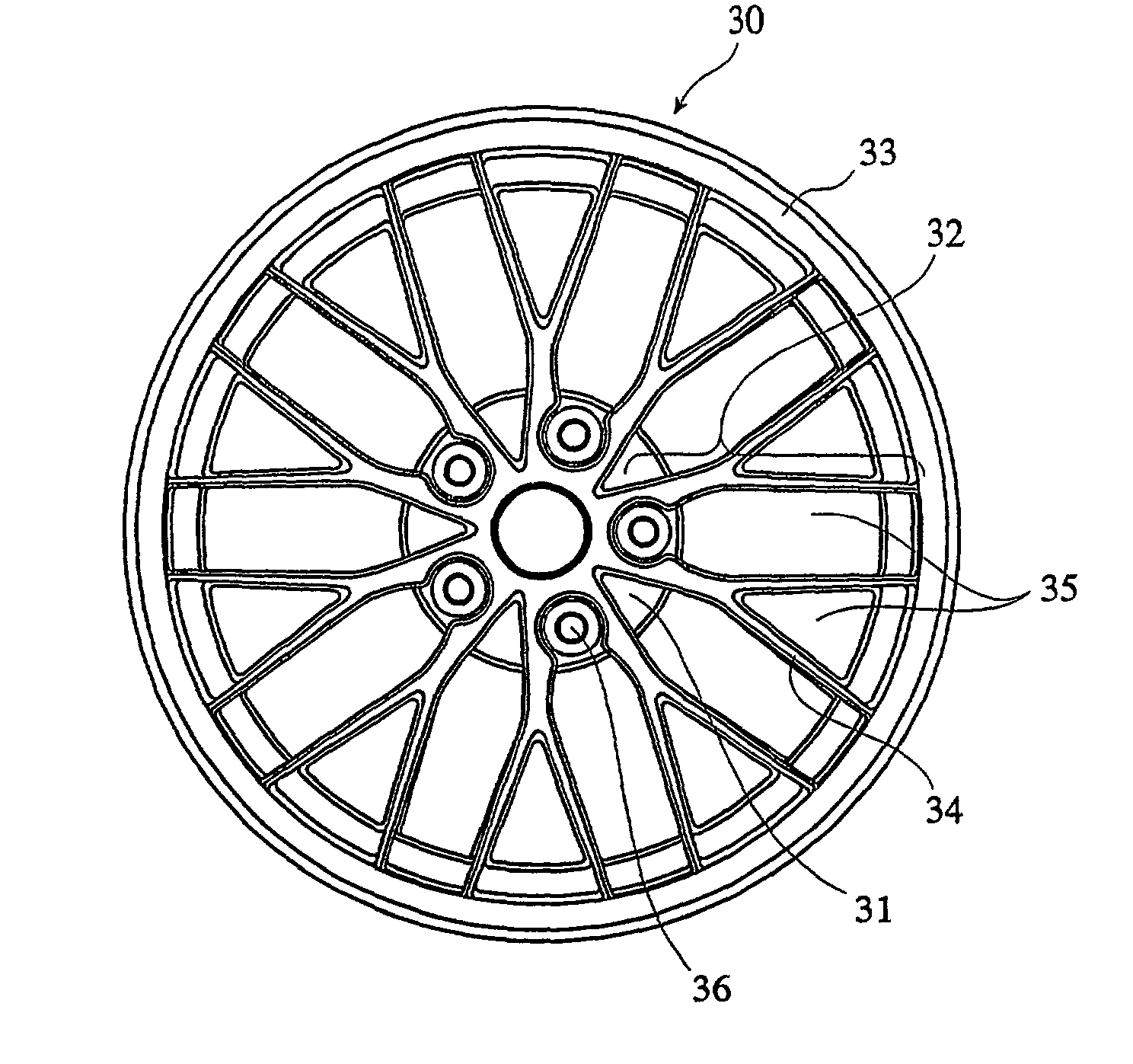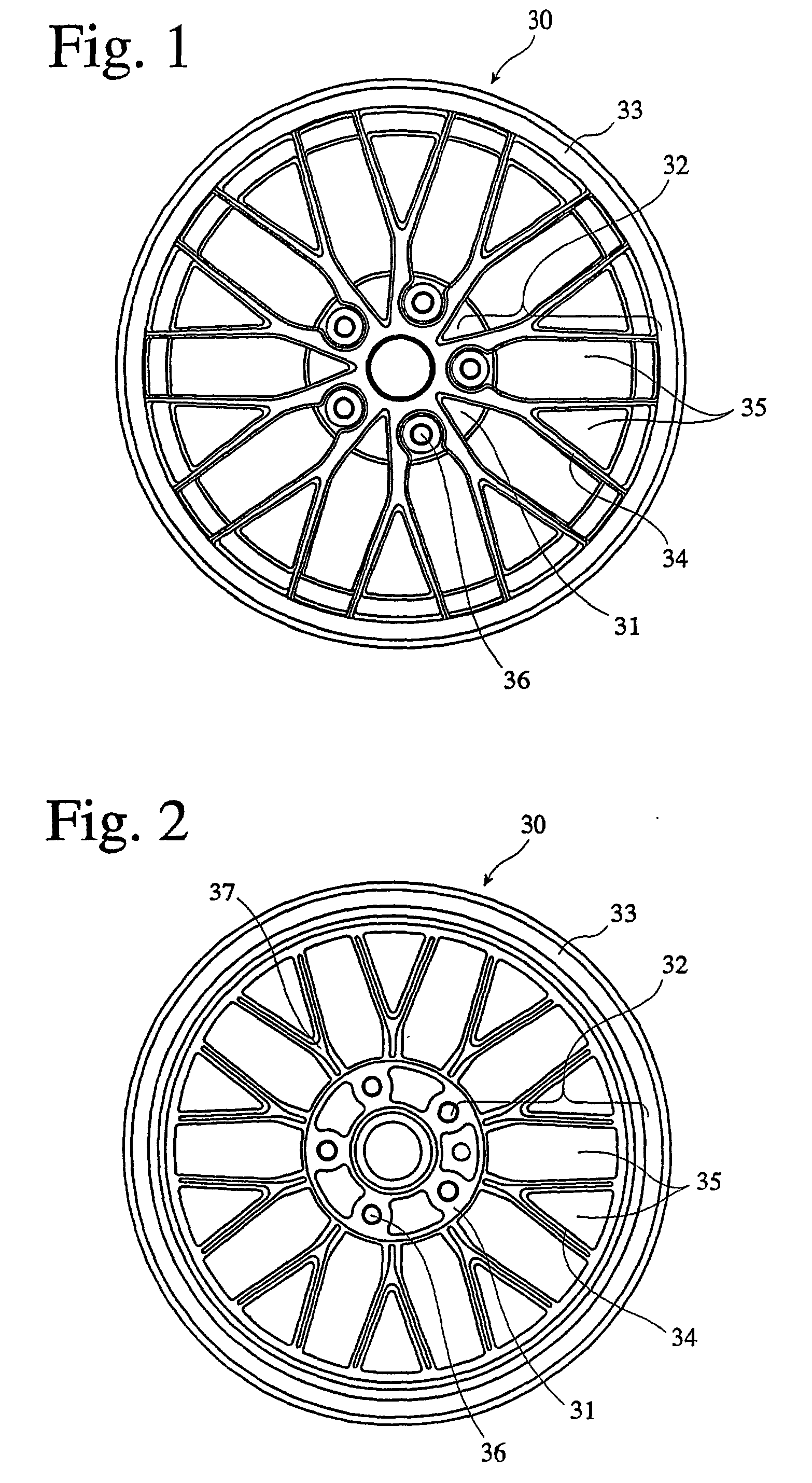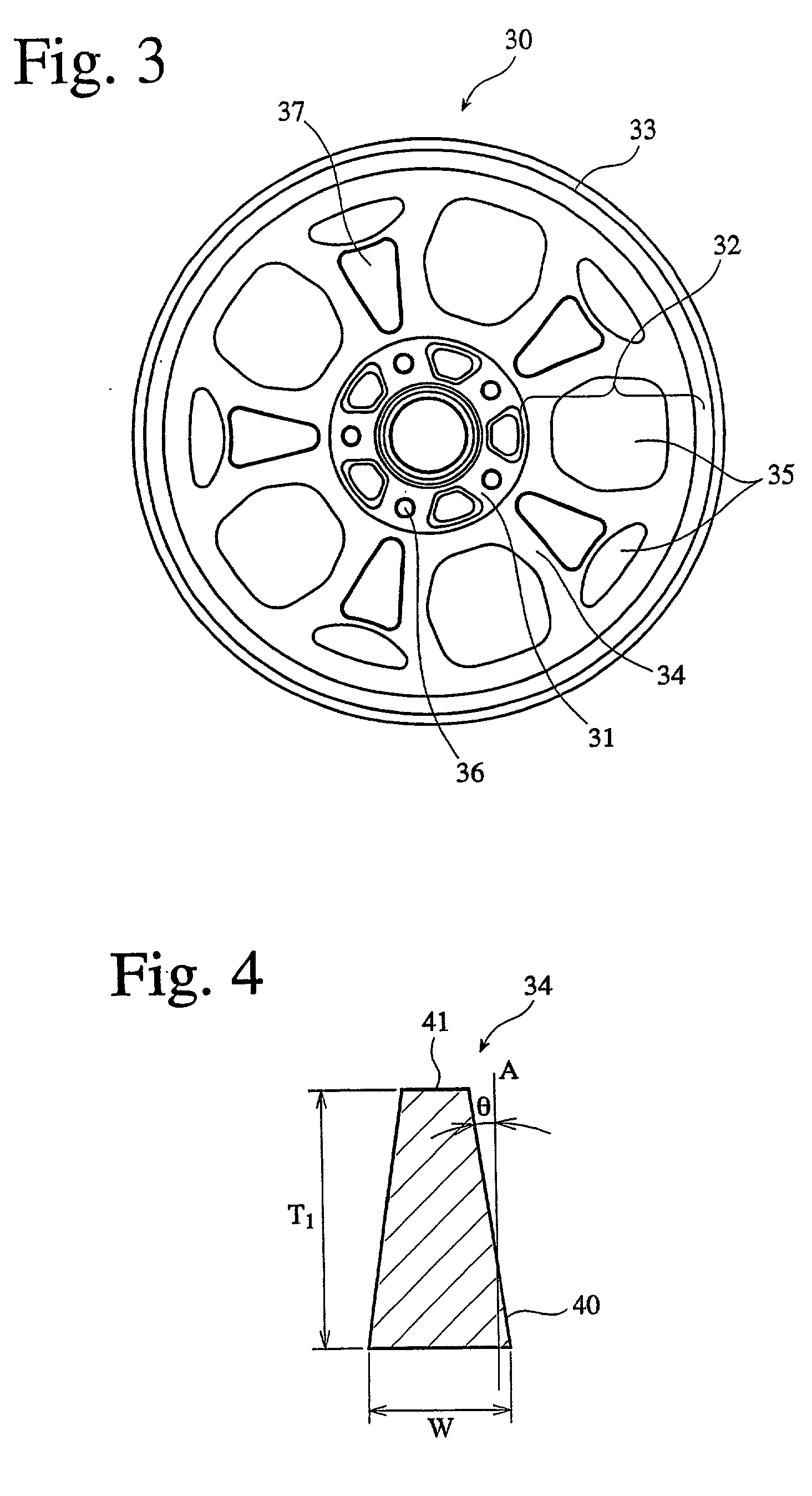Light alloy wheel for vehicle and method and apparatus for producing same
- Summary
- Abstract
- Description
- Claims
- Application Information
AI Technical Summary
Benefits of technology
Problems solved by technology
Method used
Image
Examples
example 2
[0084] Aluminum wheels were cast in the same manner as in EXAMPLE 1 except for using a casting apparatus having a plurality of stokes 4a, 4c as shown in FIG. 12. In this EXAMPLE, a melt 5 flew through a lower die 8 into transversely movable dies 10, in which it flew into a cavity for forming a rim portion of a wheel. The melt 5 was caused to flow at some angle to the wheel axis direction of the cavity, such that the melt 5 entering through the stokes 4a, 4c easily flew in a peripheral direction of the rim. Thus, 20 aluminum wheels were cast to observe whether or not there were scratch and deformation on their design surfaces. As a result, neither scratch nor deformation was observed on the design surfaces, confirming that every wheel was in a good shape.
example 3
[0085] Aluminum wheels each having a design surface shown in FIG. 1 was produced in the same manner as in EXAMPLE 1 except for using a casting apparatus having three stokes as shown in FIG. 13. One stoke was positioned such that a melt was injected into a cavity for forming a hub portion of a wheel as in EXAMPLE 1, and the remaining two stokes were positioned such that a melt flew into transversely movable dies 10 and then into a cavity for forming a rim portion of a wheel as in EXAMPLE 2. The shape of the lower die 8 was changed to have a taper angle .theta. of 3.5.degree., thereby providing each spoke portion with a cross section shape shown in FIG. 4. Also, a height T.sub.1 was 30 mm, a minimum width W.sub.min was 40 mm, and 50% or more of a taper angle of the spoke portion was 3.5.degree.. With other casting conditions identical to those of EXAMPLE 1, 20 aluminum wheels were produced. As a result, neither scratch nor deformation was observed on the design surfaces of the resulta...
example 4
[0086] Casting was carried out using a casting apparatus having three stokes as in EXAMPLE 3. The shapes of the lower die 8 and the upper die 12 were changed to provide each spoke portion with a cross section shape shown in FIG. 7. A taper angle .theta. on a design surface was 3.5.degree., and a taper angle .alpha. of the dent portion 37 on the rear side of the spoke portion was 5.degree.. Each spoke portion had a height T.sub.1 of 30 mm (substantially equal to a height of a tapered surface), a ceiling thickness T.sub.2 of 5 mm, and a minimum width W.sub.min of 4.5 mm, the taper angle .theta. of the spoke portion being 3.5.degree. in a 50% or more region of the spoke portion. With other casting conditions identical to those of EXAMPLE 1, 20 aluminum wheels were produced. As a result, neither scratch nor deformation was observed on the design surfaces of the resultant aluminum wheels, confirming that every wheel was in a good shape.
PUM
| Property | Measurement | Unit |
|---|---|---|
| Time | aaaaa | aaaaa |
| Time | aaaaa | aaaaa |
| Thickness | aaaaa | aaaaa |
Abstract
Description
Claims
Application Information
 Login to View More
Login to View More - R&D
- Intellectual Property
- Life Sciences
- Materials
- Tech Scout
- Unparalleled Data Quality
- Higher Quality Content
- 60% Fewer Hallucinations
Browse by: Latest US Patents, China's latest patents, Technical Efficacy Thesaurus, Application Domain, Technology Topic, Popular Technical Reports.
© 2025 PatSnap. All rights reserved.Legal|Privacy policy|Modern Slavery Act Transparency Statement|Sitemap|About US| Contact US: help@patsnap.com



